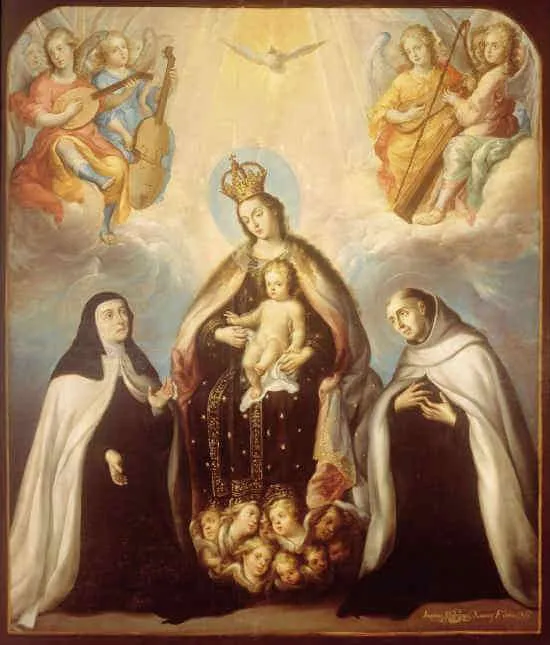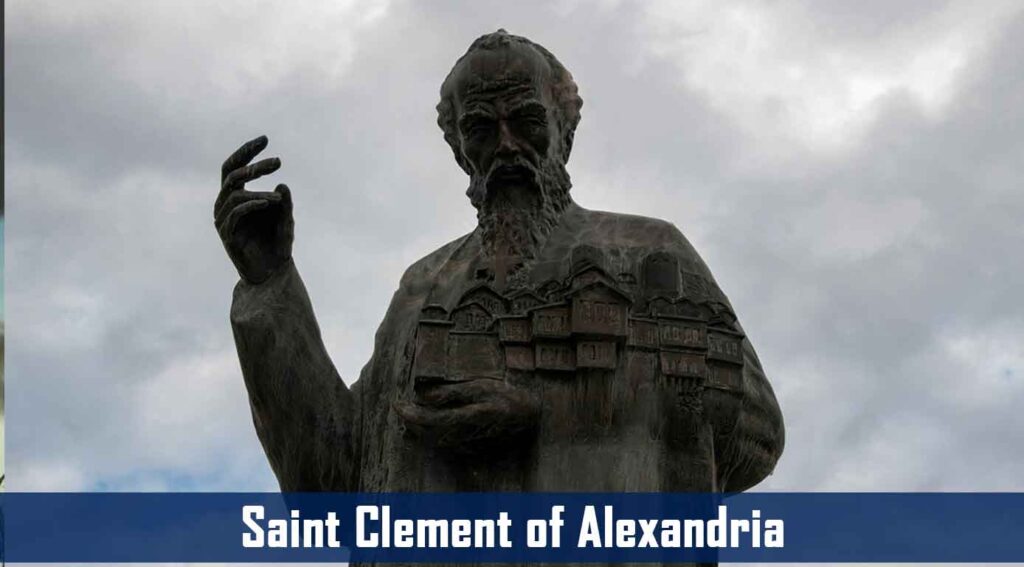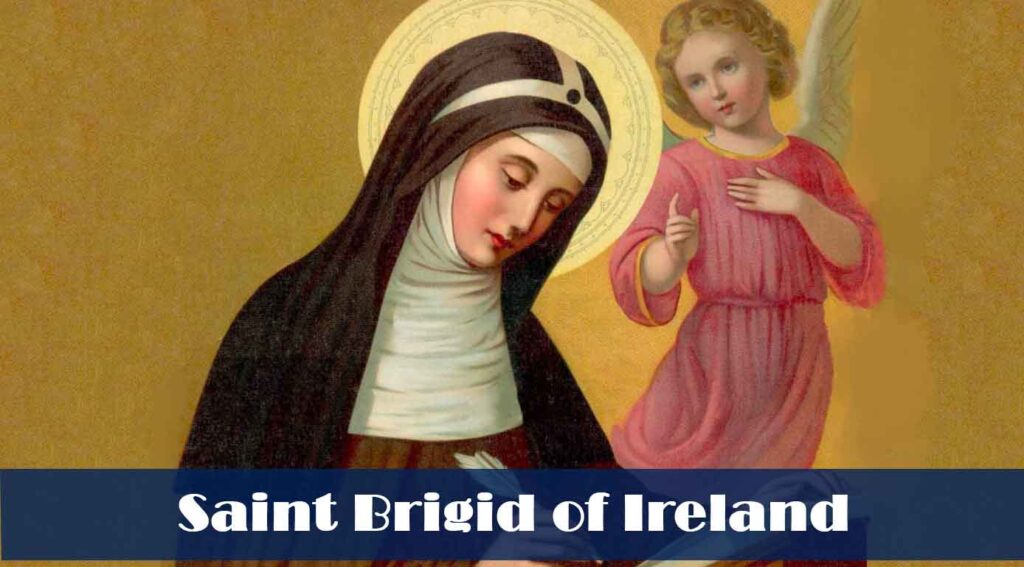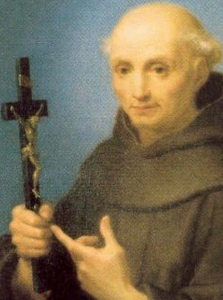543–615; Patron Saint of motorcyclists; Invoked against floods; Pre-Congregation canonization
Columban (commonly called Columbanus in Latin) was born in the Kingdom of Leinster, on the southeast coast of Ireland, a century after Saint Patrick brought the Catholic faith to the island. Writing shortly after Columban’s death, his first biographer and fellow monk, Jonas, states that when Columban’s mother was pregnant with him, she had a dream of the sun rising from her womb. She later interpreted her dream to mean that her child would be a man of incredible genius, shining the light of faith upon the people of God whom he would serve. Because of this dream, Columban’s mother took great care in raising her son, protecting him from every evil influence. He was tutored at home, studying the liberal arts and excelling in his pursuit of knowledge.
As Columban grew, he became acutely aware of worldly temptations, especially those of the flesh, and guarded himself carefully from all sin through his prayer and Scripture study. After being counseled in this area by an old and wise woman, Columban decided to heed her warnings and enter a monastery. His mother was deeply distressed by his decision and tried to stop him, even lying across the threshold of their home. Columban courageously stepped over her, exhorted her to trust in God, and informed her that though she would never see him again in this life, he would obey the will of God and go wherever God led him.
He first traveled north to Cleenish Island (Cluain Inis, in modern-day Northern Ireland) where he studied Scripture under the saintly Abbot Sinell. Around the age of twenty, Columban traveled about 100 miles east to the coast of Ireland and entered the monastery in Bangor, becoming a monk under Abbot Comgall, another saintly man. In Bangor, Columban embraced a life of study, deep prayer, and severe asceticism, in accord with the ideals of Irish monasticism at that time. He was ordained a priest and spent thirty years at the monastery, preparing himself for what would become his second vocation.
At the age of fifty, Father Columban sensed God calling him to leave his homeland and become a pilgrim and missionary for Christ, a peregrinatio pro Christo. After the fall of the Roman Empire in the late fifth century and the subsequent invasion of those lands by pagan barbarian tribes from the north and east, the Church in what would become modern-day Europe was struggling. Monasteries and the clergy were in need of reform, political instability was common as new rulers vied for power, theological disputes from heretics lingered, and pagan practices were reintroduced as invaders moved in. Since the Church in Ireland had been isolated from the rest of the Roman Church, it instead enjoyed relative stability. Father Columban desired to extend that stability to the people of Europe.
After Abbot Comgall reluctantly agreed to Father Columban’s request, Father Columban and twelve other monks set sail for Gaul, modern-day France. They first crossed the Irish Sea to England, and from Cromwell crossed the English Channel, landing in Saint-Malo, France. The king of that region was Good King Gontrand, as Saint Gregory of Tours called him. King Gontrand had lived a sinful life of fleshly indulgence as a young man, but remorse led him to a radical conversion. Afterward, he was known as a holy man who cared for all of his subjects as a father. His penitential life drew him into deep union with God, and miracles were attributed to him during and after his life. After death, by popular acclaim, he was declared a saint.
The arrival of Father Columban and his companions delighted King Gontrand, as he found in them a depth of fervor that was lacking within his kingdom. He gifted them an ancient Roman fortress in Annegray for their first monastery, near the border of modern-day northern Switzerland and southern Germany. Though the fortress was in ruins, the monks restored it and turned it into a school. The school grew so rapidly that the monks had to expand to a nearby property in Luxeuil. Soon after, they expanded to another location in Fontaine, about an hour’s walk to the north.
Given the fact that the Frankish Church in which he established his first monasteries was struggling, the people were immediately drawn to Father Columban and his fellow monks. In them, they discovered men who were faith-filled, ascetical, wise, and pastoral. Lives were changing, and this caught the attention of the local bishops. The envious bishops began to find fault with these Irish monks, criticizing them for introducing Irish traditions that were contrary to the Roman ones. The Irish monks celebrated Easter on a different day, following the Eastern tradition. They also used the Celtic tonsure, in which the front half of the monk’s hair was shaved, in opposition to the Roman tonsure, in which the head was shaved in a circle on top of the head, representing the crown of thorns. The bishops deposed Father Columban, demanding that he appear before them at a local council. Instead, Father Columban wrote them a letter, encouraging them to focus on more important issues facing the local church. Father Columban wrote to Pope Gregory the Great, asking him to intervene, but the Holy Father died about the time his letter was received. He attempted the same with Pope Boniface IV, but it is unclear if he received a response. Eventually, it appears the monks embraced the local culture.
During the remainder of his years in Luxeuil, Father Columban wrote a foundational monastic rule called the Regula Monachorum. This “Rule for the Monk” was an important document that articulated the daily life of monasticism, including the monk’s prayer, communal life, obedience, manual labor, and strict austerity and asceticism, which was far stricter than the Rule of Saint Benedict that eventually won out as the normative rule for monks in the West. Father Columban also wrote a supplement to the rule, a guide for Confession which emphasized the importance of imposing a penance that was proportional to the sin, and a collection of instructions that gave practical advice on morality, humility, charity, and love of God. He also left behind a number of sermons, letters, poetry and hymns.
Being a man of great faith and courage, Father Columban openly chastised King Theuderic II, a successor to Good King Gontrand, who was living in an adulterous relationship. This led to Father Columban’s exile, along with the remainder of the Irish monks, leaving only those from Gaul (France) who had joined them after their arrival. After being forced onto a boat that was to sail to Ireland, the boat was driven off course by a storm and returned to the French mainland. The captain saw it as a sign from Heaven and parted ways. Father Columban then spent the next few years traveling with his monks across France, Switzerland, and southern Germany, eventually settling in northern Italy where they built the famous Bobbio Abbey, where Father Columban died a few years later.
Saint Columban spent the first half of his life being formed in Irish monasticism. When the appointed time came, God sent him and his fellow monks to help restore the faith to the troubled parts of Europe. After his death, the few monasteries he founded expanded to over 200 new foundations. He is remembered for his zeal, his miracles, his authority over animals who listened to his commands, his rigorous monastic rule, and his pastoral guide on the celebration of the Sacrament of Confession and the imposition of appropriate penances. Though his courage and boldness led to persecution and discord, that discord resulted in changes within a broken Church.
As we honor this holy monk, ponder the fact that it is never too late to do great things for God. Saint Columban began his missionary journey at the age of fifty and continued to forge new paths for the Gospel until the time of his death in his early seventies. In imitation of him, renew your commitment to the proclamation of the Gospel and the apostolate to which God is calling you. Age, wisdom, and experience are all tools God can use, just as He did with Saint Columban.
Source: https://mycatholic.life/saints/saints-of-the-liturgical-year/november-23—saint-columban-religious–optional-memorial/








